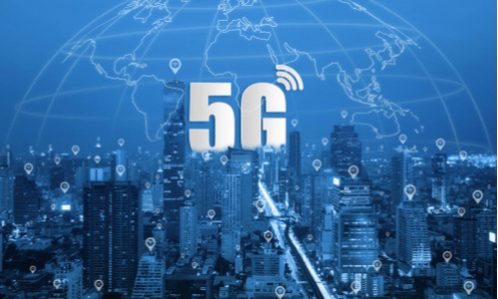
The coronavirus has already dented supply chains — notably those that serve retailers and auto manufacturers, among others. Digging a bit deeper and into the tech supply chains serving Apple, the headlines seem focused on consumer-facing firms, where end products such as cell phones may be slow to reach shelves if (well, of course, when) production gains traction again.
But the ripple effect goes right to the infrastructure that underpins future growth of technology, where data moves faster and the Internet of Things (IoT) gets ever closer to ushering in a hyper-connected world.
We’re referring to 5G, of course.
It is, of course, reasonable to expect that with any technology endeavor that is global in scope — especially the rollout of a new network protocol — will see twists and turns, bumps and turbulence.
It remains to be seen whether the fifth generation of mobile technology sees a hiccup from what is increasingly being labeled a pandemic, or something longer-lasting and possibly detrimental.
Last week, analysts at Omdia wrote, “With the epidemic arriving at dawn of 5G’s mainstream deployment phase, the coronavirus has the potential to disrupt the progress of the next-generation wireless standard, as the crisis slows or threatens to slow the production of key smartphone components, including displays and semiconductors,” as relayed by MarketWatch.
“We believe that China will take a significant position in the 5G era in both supply and demand of devices and network-wise,” Omdia analyst Jusy Hong said in an email interview with the site.
Chip Firms Pulling Back
Chip firms have already been cutting production — Samsung among them, which has just idled a plant in South Korea. Xilinx has said spending on 5G related infrastructure has been weak.
And as noted in this space this past week, two of the top fiber optic cable providers have facilities and headquarters in Wuhan, which has been viewed as an epicenter of sorts for the virus, and has been at all but a standstill.
Thus, at least for now, headwinds are buffeting 5G, with drags on the network buildout side of the equation and on the end devices that would utilize that network.
Importantly, too, the ripple effects are likely to be felt in the wake of event cancellations that bring stakeholders together in one room, or venues, to see what’s on offer and even chart the future of 5G. Earlier this month, Mobile World Congress 2020 was canceled — a tradeshow where new smartphones are introduced and where deal making goes on.
It doesn’t help that, as the BBC reported Wednesday, February 26, at least some people are taking to social media to claim that there is a link between 5G networks and the virus. In one example relayed by the BBC:
“The Stop 5G UK group has more than 27,000 members, one of whom has posted this: ‘I’ve heard it’s not a serious “Virus,” it’s about as bad as a flu or cold. So really this is a perfect plan to cover up EMF/5G related illnesses.’”
Other sites have claimed that 5G launches in Wuhan had come just before the coronavirus outbreak. Fake news is fake news, to be sure, but fear is fear. And it’s not too far fetched to think that those who worry about exposure pull back on all sorts of expenses, or possible (real and imagined) exposure.
After a while, the delays, the hesitations, add up.
5G is by no means down for the count, but it’s been rocked back on its heels, perhaps, just a bit.
Full Content: PYMNTS
Want more news? Subscribe to CPI’s free daily newsletter for more headlines and updates on antitrust developments around the world.
Featured News
DOJ and FTC Introduce Website for Reporting Anti-Competitive Healthcare Practices
Apr 18, 2024 by
CPI
US Congress Advances Legislation to Compel TikTok Sale
Apr 18, 2024 by
CPI
UK Financial Sector Advocates Enhanced Regulatory Accountability
Apr 18, 2024 by
CPI
Google and All 50 States Defend $700 Million Consumer Settlement
Apr 18, 2024 by
CPI
Colorado Enacts First Law to Protect Consumer Brainwave Data
Apr 18, 2024 by
CPI
Antitrust Mix by CPI
Antitrust Chronicle® – Economics of Criminal Antitrust
Apr 19, 2024 by
CPI
Navigating Economic Expert Work in Criminal Antitrust Litigation
Apr 19, 2024 by
CPI
The Increased Importance of Economics in Cartel Cases
Apr 19, 2024 by
CPI
A Law and Economics Analysis of the Antitrust Treatment of Physician Collective Price Agreements
Apr 19, 2024 by
CPI
Information Exchange In Criminal Antitrust Cases: How Economic Testimony Can Tip The Scales
Apr 19, 2024 by
CPI